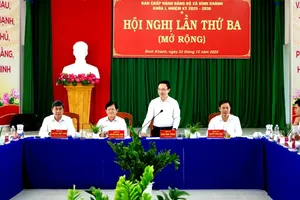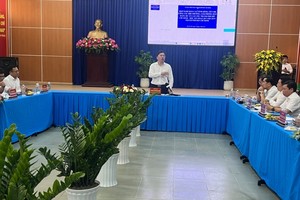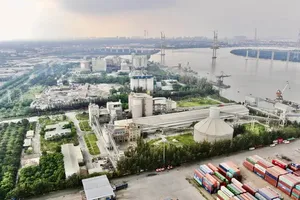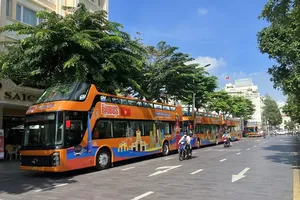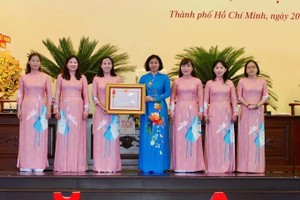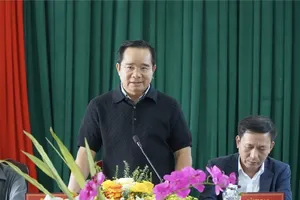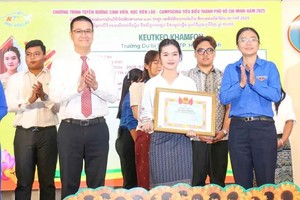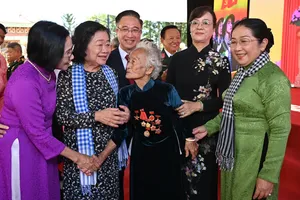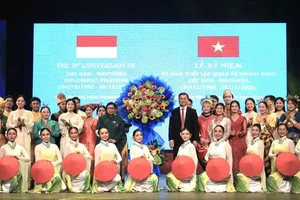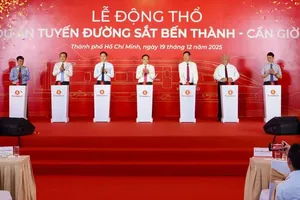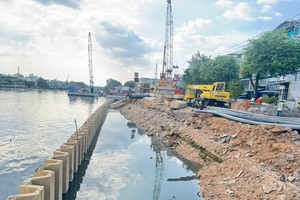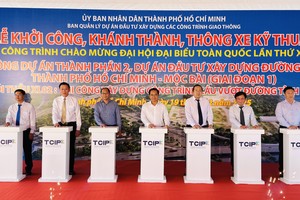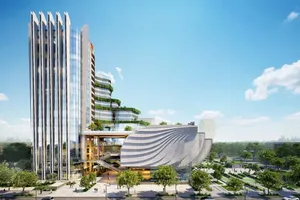According to the city leader, the draft resolution amending Resolution 98/2023/QH15 of the National Assembly is currently being reviewed for public feedback before submission to the National Assembly. Once approved, the additional mechanisms and policies will help ensure that the implementation of projects and works proceeds without interruption or disruption, while creating breakthrough mechanisms and policies to promote the city’s socio-economic development.
He made the statement while chairing the first session of the Executive Party Committee of the municipal People’s Committee held on November 7.
Mr. Nguyen Van Duoc, Member of the Party Central Committee, Deputy Secretary of the HCMC Party Committee, Secretary of the Party Committee of the Ho Chi Minh City People’s Committee and Chairman of the Ho Chi Minh City People’s Committee, chaired the session.

In his opening remarks, Chairman Nguyen Van Duoc noted that during the first ten months of 2025, despite facing intertwined challenges and opportunities, the city achieved significant results through high political determination, strong unity, and innovative governance. The Standing Party Committee of the Ho Chi Minh City People’s Committee and the party committees of grassroots units have focused on implementing practical, creative measures that have delivered tangible outcomes.
He urged delegates to propose comprehensive, scientific, and breakthrough solutions for the final months of 2025 and beyond, aiming to fulfill 30 key targets and three strategic breakthrough programs outlined in the Committee’s congress resolution for the 2025–2030 term.
Among the priorities, he emphasized accelerating economic growth, targeting a GRDP increase of 8.5 percent in 2025, and completing all major socio-economic objectives, particularly those currently lagging behind.
Highlighting that the disbursement rate of public investment capital has only reached nearly 60 percent below the planned 75 percent for the third quarter and 100 percent for the fourth, Chairman Nguyen Van Duoc called on officials to “analyze deeply and identify breakthrough solutions” for the remaining months of the year.
“The causes are already clear, and the city leadership has implemented numerous measures, assigning sectoral officials and special task forces to key localities to accelerate progress,” Chairman Nguyen Van Duoc emphasized.
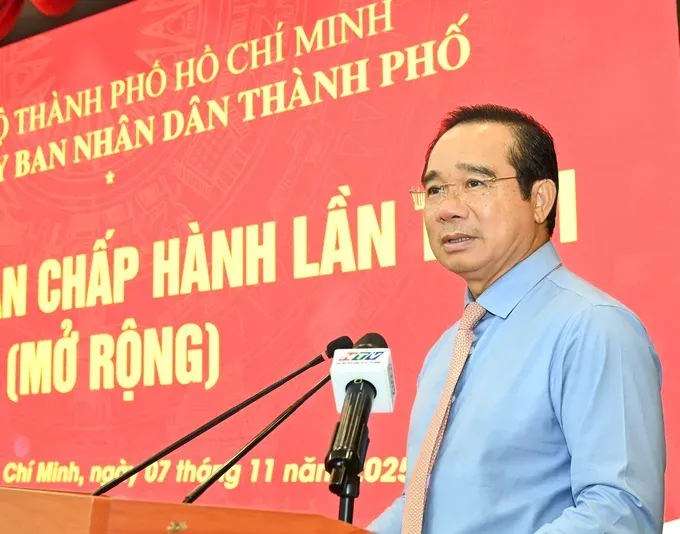
Regarding the two-tier local government model, he noted that while it has been effectively implemented, there are still areas requiring adjustment, particularly a shortage of specialized personnel. The city has directed the Department of Home Affairs and other agencies to temporarily assign staff from departments to support localities. However, he stressed that a long-term solution must focus on training young, qualified civil servants.
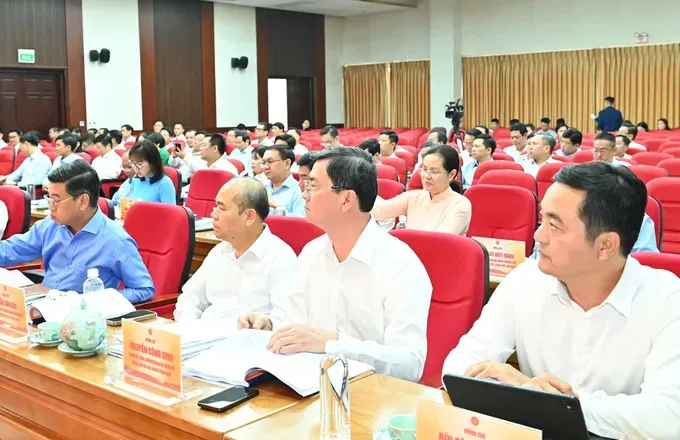
Director of the Department of Home Affairs Pham Thi Thanh Hien reported that the city is restructuring state-owned enterprises and public service units. After the reorganization, the number of such entities is expected to decrease by 446 (16.66 percent), while 504 new grassroots-level units including project management boards, essential public service centers, and medical stations will be established to meet operational needs.
By October 1, the city had resolved the retirement of 6,332 officials under Decree 178 and allocated 9,649 staff positions at the commune level. According to the Director of the Department of Home Affairs, through the restructuring process, commune-level authorities are now responsible for 1,066 tasks, of which four-fifths are newly assigned.
The city’s departments and agencies have organized 17 hands-on training conferences for more than 16,000 officials and citizens on digital transformation and the application of digital technologies to enhance the capacity and professionalism of civil servants. In addition, the city has piloted the use of robots to assist citizens in completing administrative procedures quickly and accurately, while strengthening the delegation of authority.
Concluding the conference, Chairman Nguyen Van Duoc emphasized that in order for the city’s GRDP to reach 8.5 percent growth for the year, the fourth quarter must achieve 12.4 percent growth - an extremely demanding task. To meet this target, public investment disbursement must reach 100 percent, particularly in site clearance. He called on the entire political system, as well as leaders of agencies, units, and localities, to thoroughly internalize the city leadership’s directives and to demonstrate dynamism, creativity, transparency, decisiveness, and the courage to think, act, and take responsibility.
At the same time, he urged acceleration in the preparation and adjustment of planning, the development of urban infrastructure, and the creation of new growth drivers especially adjustments to the Ho Chi Minh City general plan and the master plan—closely aligned with the orientation of forming “three zones – one special area – three corridors – five pillars". The city will focus on definitively resolving long-standing difficult and stalled projects, while improving the efficiency of managing and utilizing public housing and land resources.
The city leader also directed departments to accelerate the preparation and adjustment of urban planning and infrastructure development to foster new growth drivers—particularly through the adjustment of the city’s general plan.
He concluded by calling for decisive action to resolve long-standing, complex projects, and to improve the efficiency of public land and asset management to optimize the city’s development resources.
The Chairman requested continued improvements to the two-tier local government system, with particular emphasis on administrative reform; the reception and resolution of administrative procedures regardless of administrative boundaries; investment in equipment for commune-level authorities; and the rational arrangement of offices. At the same time, preparations must be made for investment in key and priority projects for 2026 and the 2026–2030 period.
